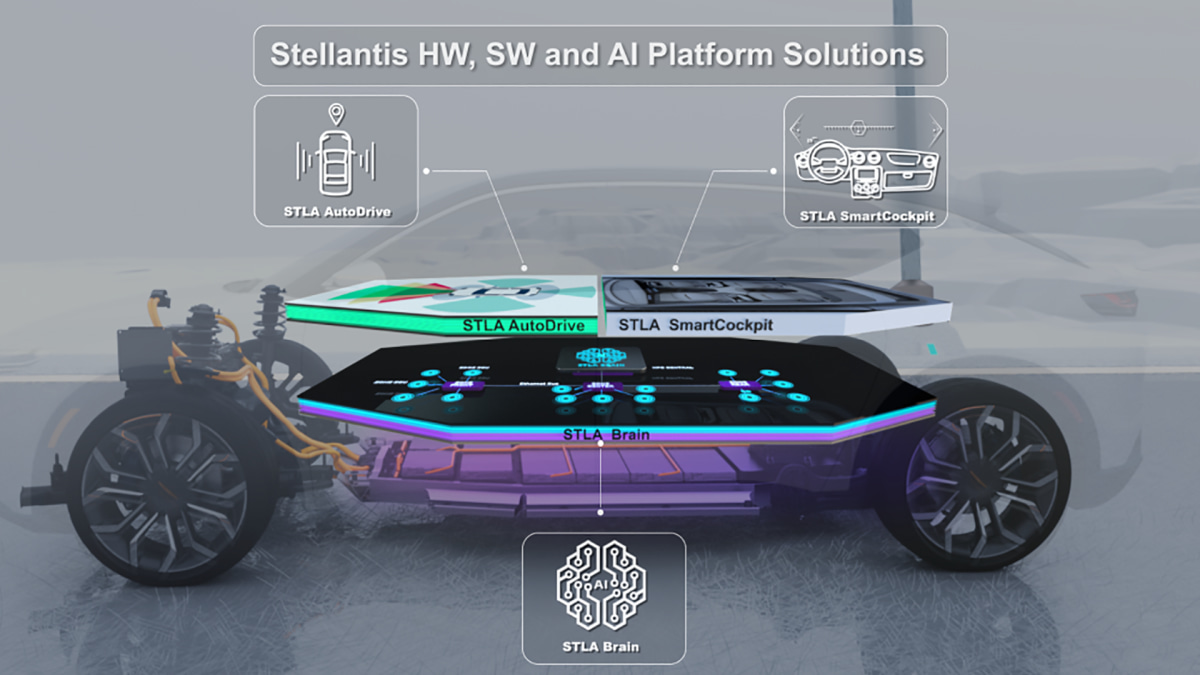It took a minute, but Stellantis finally got its advanced assisted driving features launched on the market with this year’s Grand Cherokee and Grand Cherokee L. Those models can be optioned with Hands-free Active Driving Assist, which works on vehicle-approved roads and at any speed, offering hands-off driving, lane centering, and predictive slowing for corners. This marked a step above Active Driving Assist, which is hands-on adaptive cruise control and lane centering that works up to 90 miles per hour. HFDA only works on approved roads, can change lanes after the driver taps the turn signal, and works up to 90 miles per hour.
During Stellantis’ Investor Day, the automaker offered analysts a preview of the evolution its Smart Cockpit and AutoDrive will bring to driver assistance. It starts with the STLA Brain, another heavy-duty core computing center able turn massive amounts of vehicle and sensor data into a safe and comfortable riding experience for occupants who might be paying more attention to their screens than the road. As we’ve seen with other makers from BMW
to
Rivian, this entails a massive reduction in the number of
ECUs STLA Brain is the, well, brains behind the next iteration of Hands-Free Active Driving Assist, called AutoDrive. Meant to compare to Ford’s
BlueCruise and
GM’s Super Cruise, Stellantis says this will eventually turn into a full Level 3 no-look no-hands autonomous system on approved roads. For the time being, Stellantis engineers and programmers are working on extending the amount of time between vehicle requests for driver involvement from ten minutes to 40 minutes. In the meantime, the only carmakers we know of with system that permit some measure of no-look driving,
Mercedes-Benz
has been approved for limited Level 3 activation of
its Drive Pilot system in California and Nevada, and
BMW gained Germany’s approval of its limited Level 3 Personal
Pilot. Stellantis’ AutoDrive is due to appear on offerings for the 2025 model year in the U.S., replacing Hands-Free Active Driving Assist, but the precise timing isn’t clear.
Then, there’s SmartCockpit, first teased in the 2022 Chrysler Airflow concept and likely barely comparable to that by now, effectively billed as a comprehensive overhaul of the user experience and user interface.
Ned Curis, the automaker’s chief engineering and technology officer, told Wall Streeters last month
